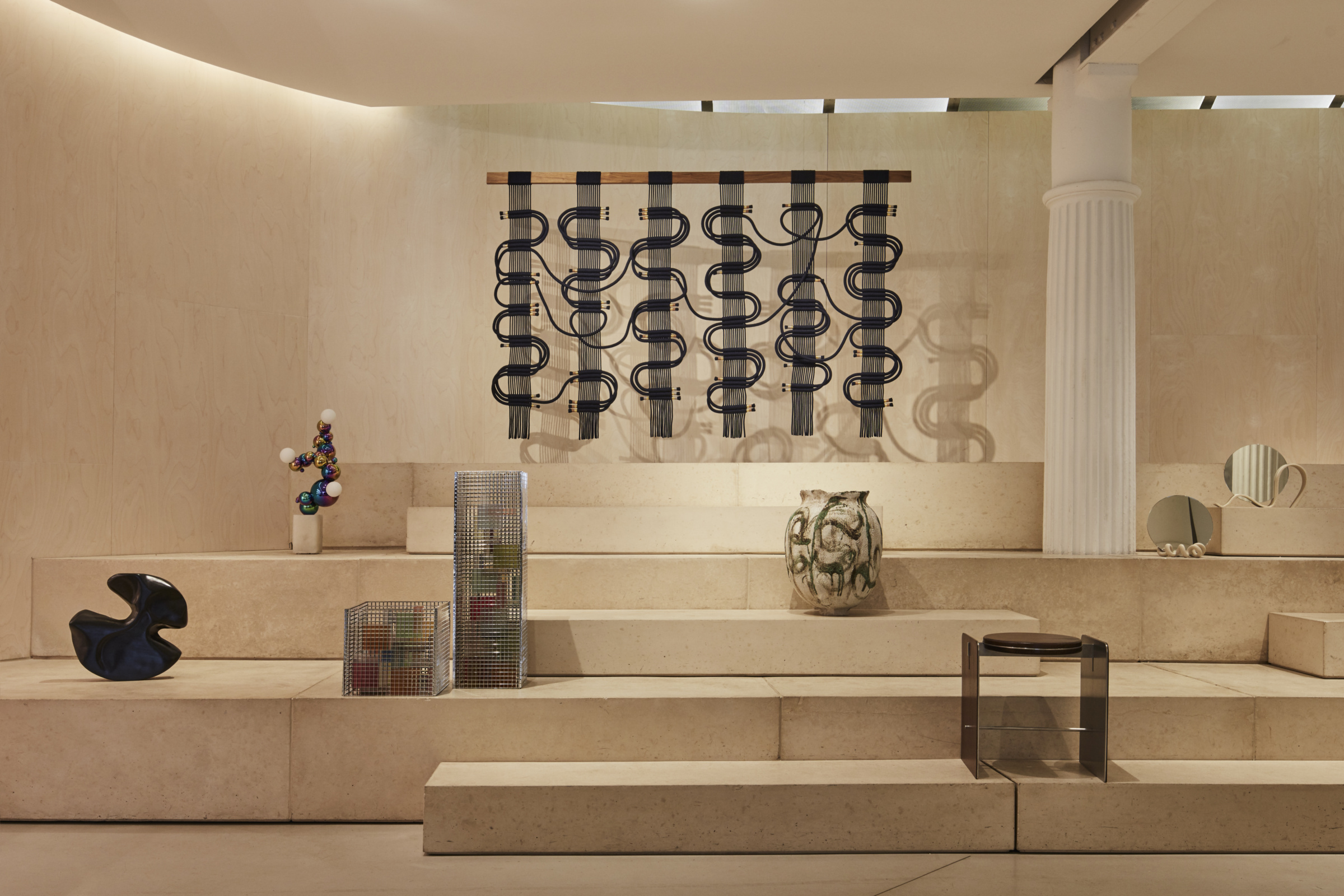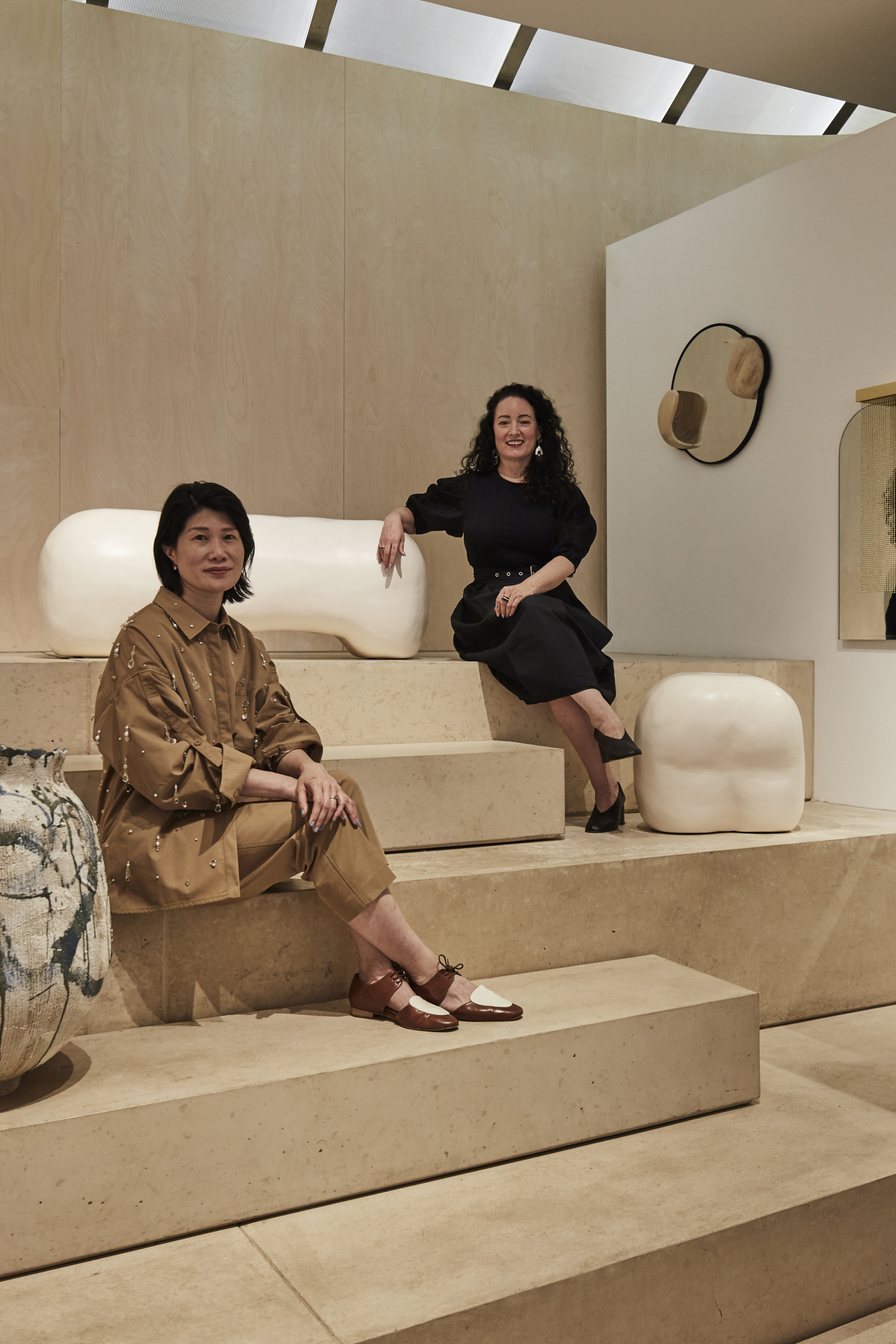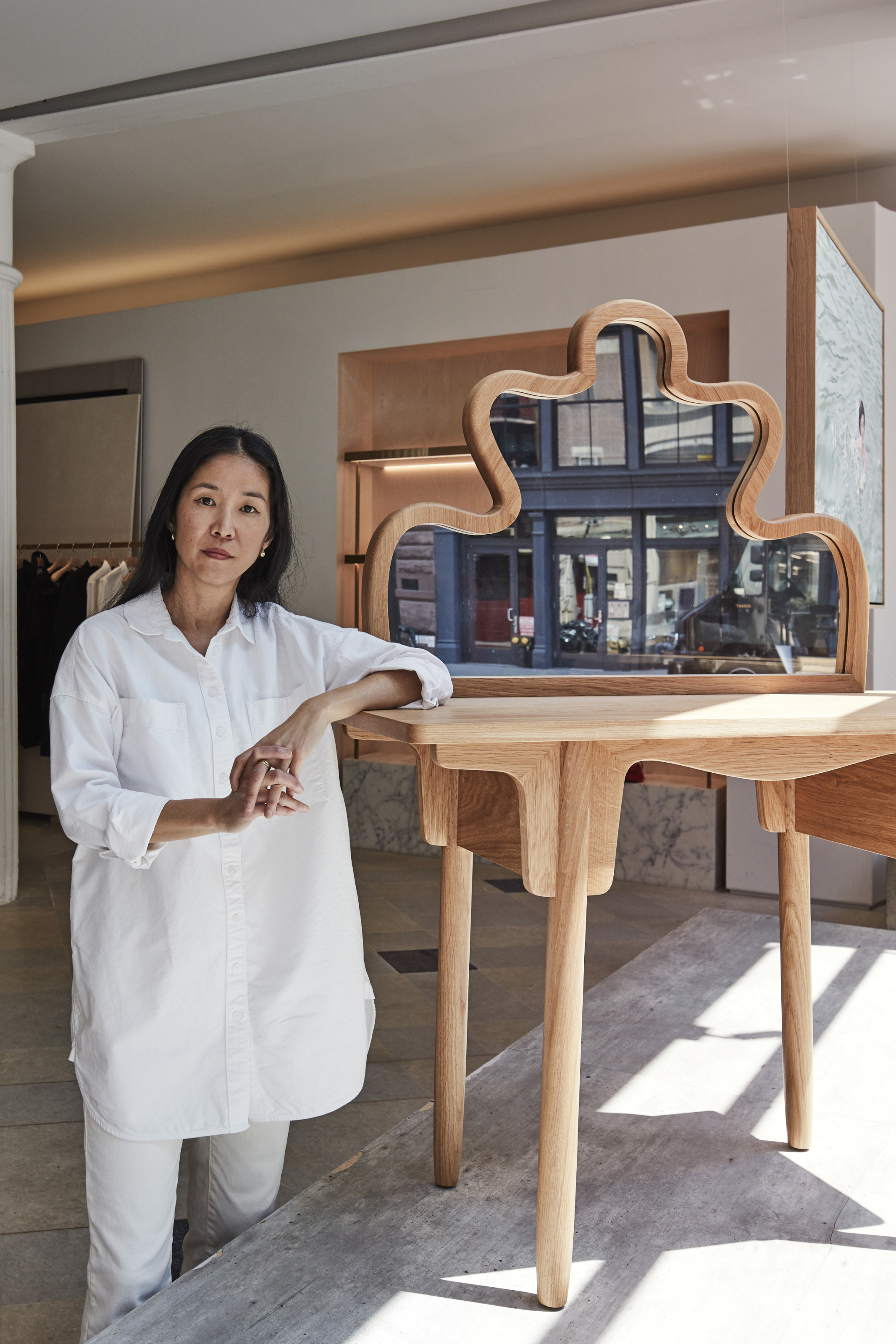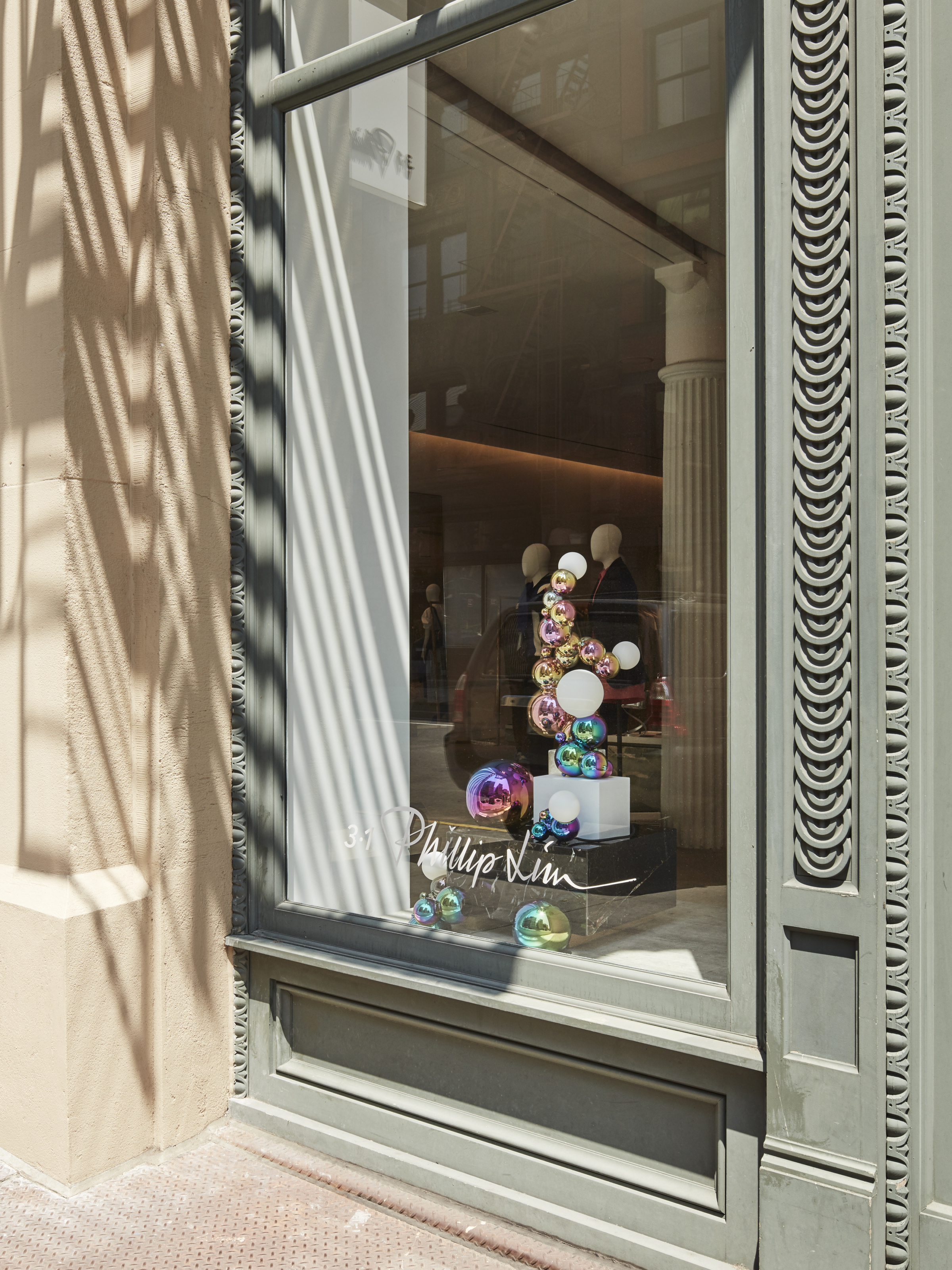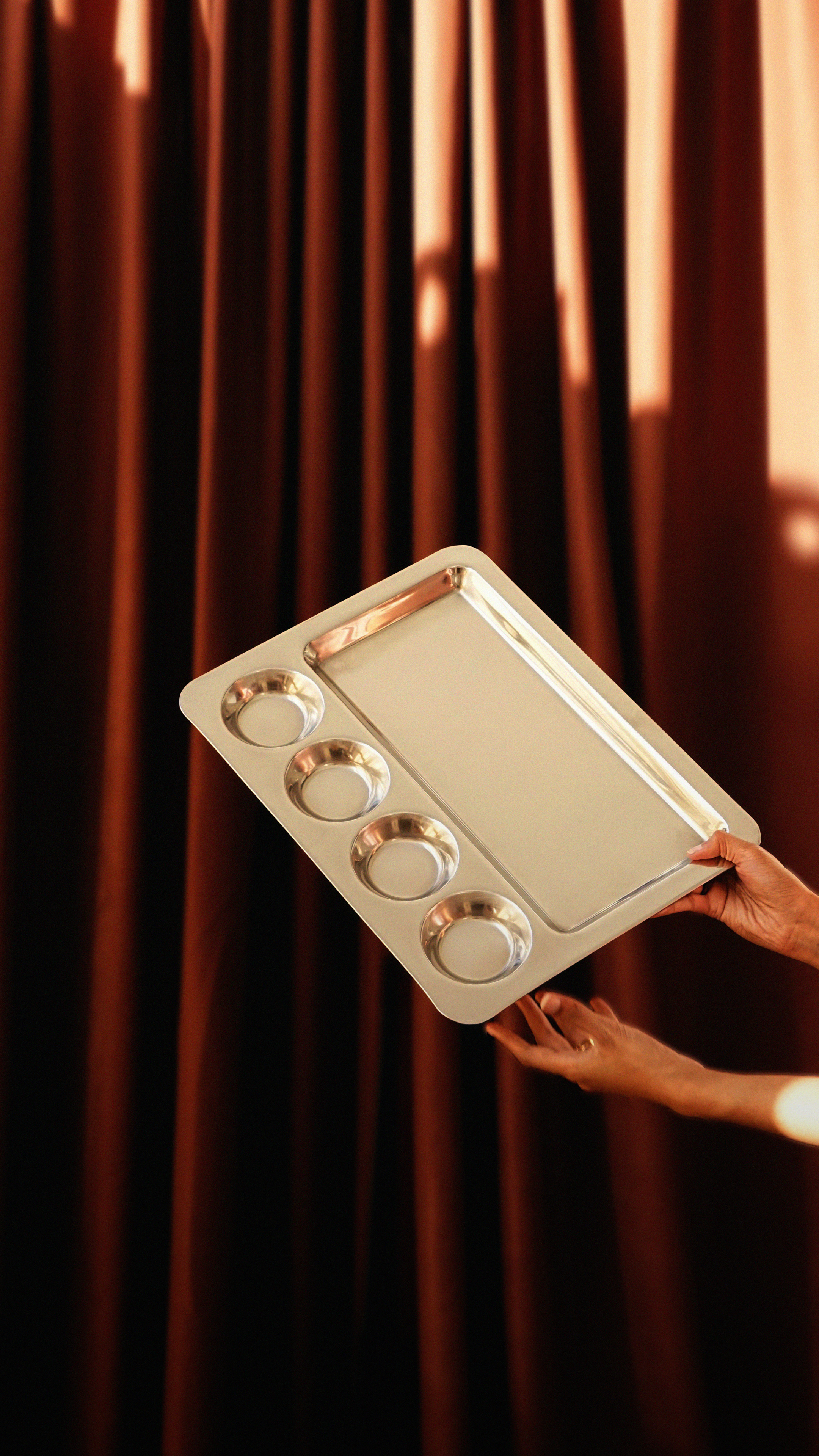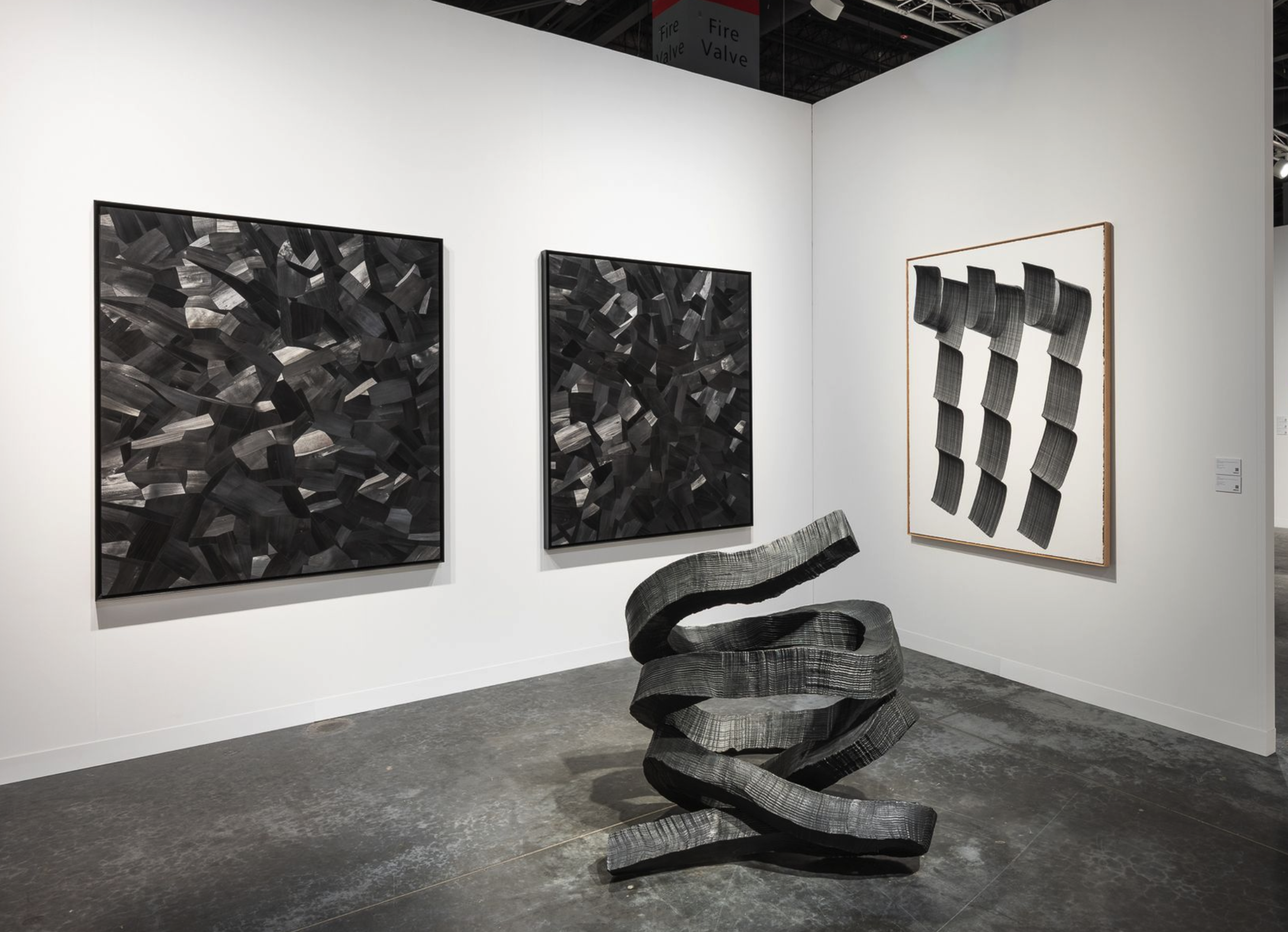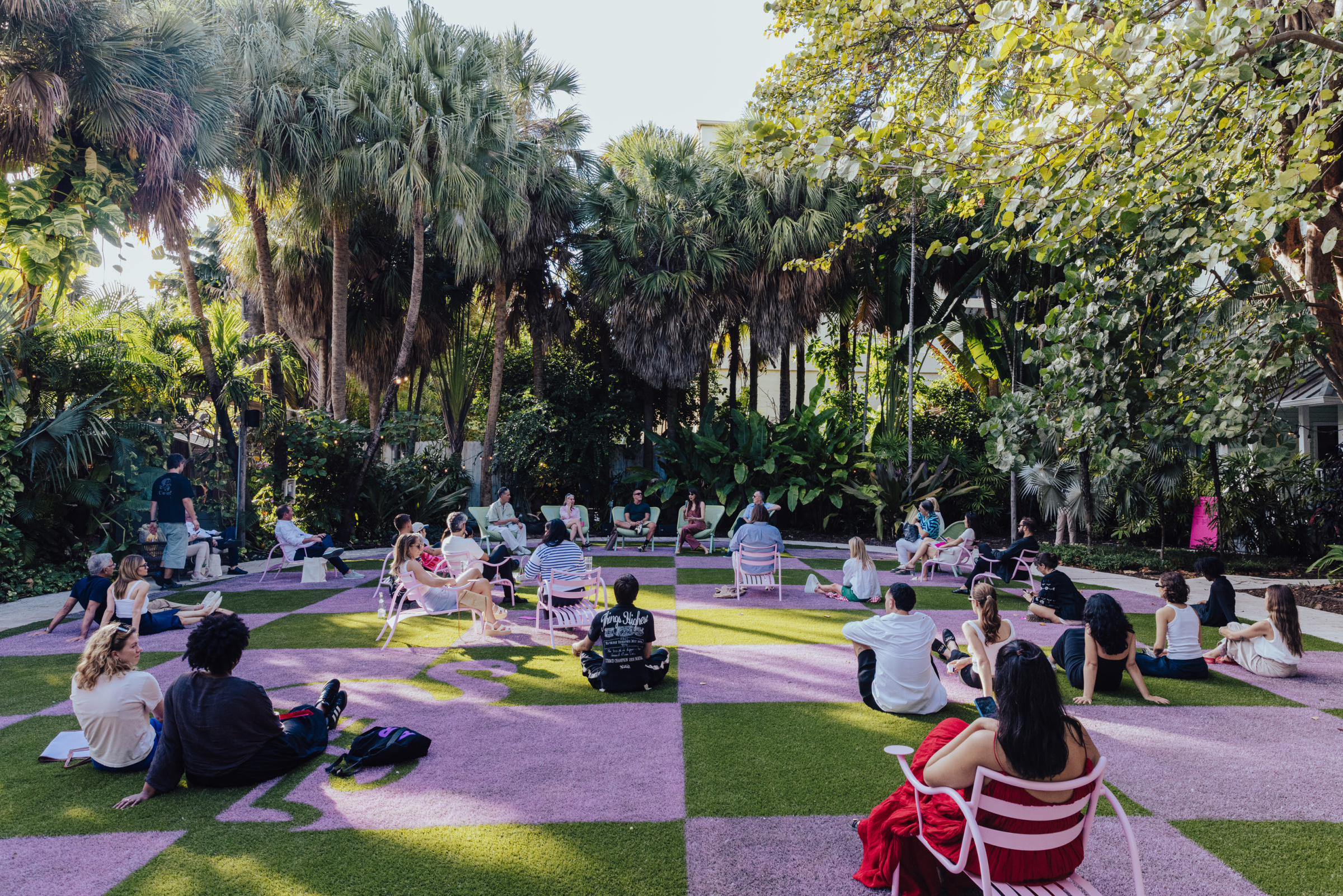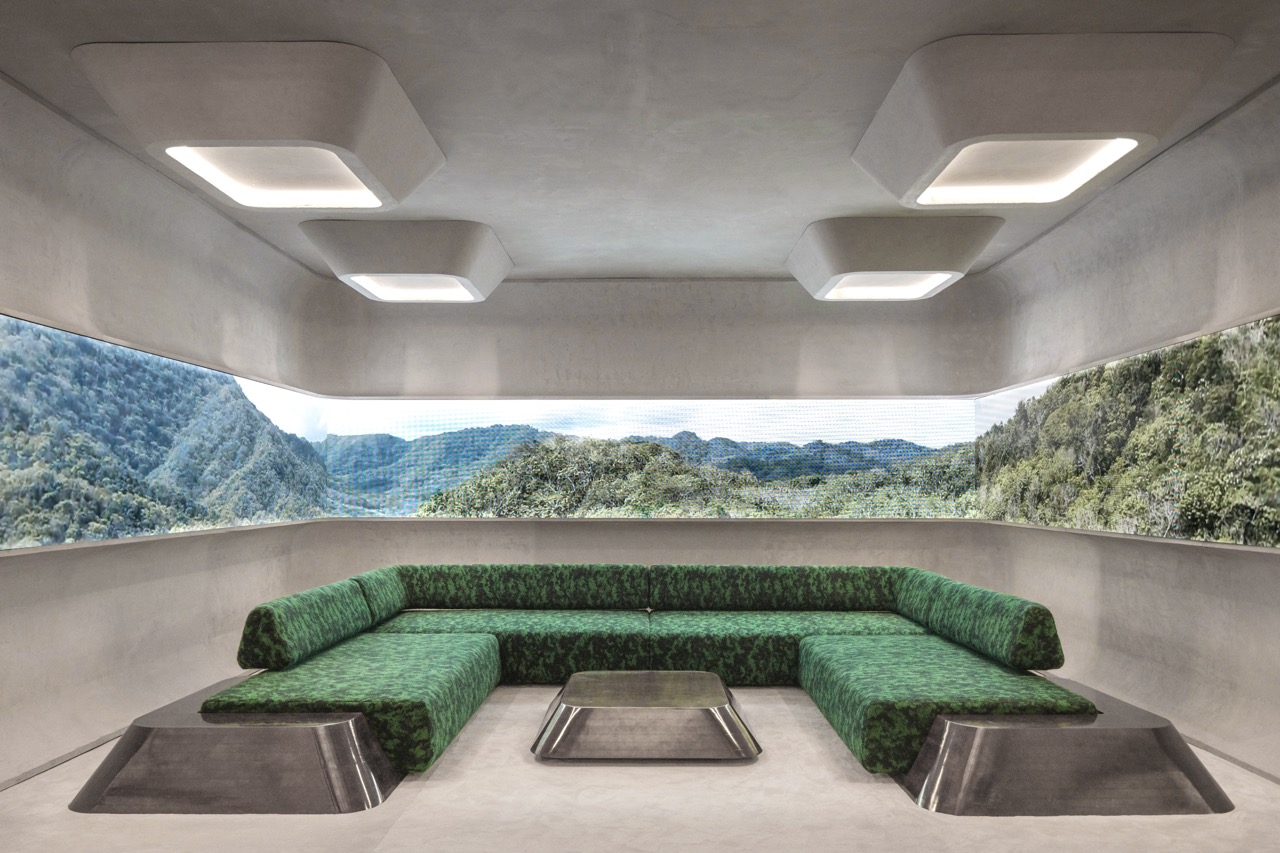The mirror is an ancient object, so old that it emerged before humans learned how to grind dust into glass. With thousands of years of history, purpose has gone beyond the means of practical use; among them, it has been used as a tool for rituals, a symbol of power and a gift for lovers. In “Upon Further Reflection,” 20 female AAPI designers considered the mirror’s place in history and culture. The show ran during NYCxDESIGN at 3.1 Phillip Lim.
Curated by Lora Appleton, founder of the Female Design Council, and Andrea Hill, founder of Tortuga Forma, in partnership with the Asian American Pacific Islander Design Alliance, (AAPIDA), “Upon Further Reflection” showcases the talents of the underrepresented AAPI community of designers. Known more for their professional work in interiors, furniture and lighting, the curators gave the designers an opportunity to show work across any discipline, which broadened the exhibition mediums into painting, sculpture, ceramics and installation.
- Curators Andrea Hill and Lora Appleton. Photo by Angela Hau
- Syrette Lew poses with her piece, “Moving Mountains.” Photo by Angela Hau
“Co-curating a show like this allowed me to rediscover myself within a larger community of creatives who share experiences around gender and ethnicity,” Andrea Hill said in a statement. “The exhibition format also felt right for showcasing how each artist has interpreted the concept and materiality of reflection.”
Appleton and Hill made use of the entire 3.1 Phillip Lim storefront. They mounted Susan Maddux’s untitled fiber work, made with a Japanese ink-blot technique, to the wall next to velvet slacks. They tucked Tina Scepanovic’s “Boundaries for Dinner,” delicate glass jars with spiky crowns, on an illuminated shelf as if they were handbags. They placed Rosie Li’s “Bubbly 1a,” a lamp made from a stack of rainbow bubbles — enchanting but tainted, poisoned from oil — in the window facing the street, as if it were a mannequin. These works were cleverly integrated between Lim’s products, erasing the barrier between commercial goods and fine art.
- Rosie Li’s “Bubbly 1a” replaces a mannequin in the 3.1 Philip Lim storefront. Photo by Angela Hau
- “Mirrors for Aliens” by Soft Geometry. Photo provided by the artist
Many pieces, however, were grouped together upon wide, marble steps, usually reserved for dramatic product displays. Displayed like museum objects, these works more obviously read as art, which made the pieces less approachable but put stronger emphasis on their craftsmanship. They included Windy Chien’s winding knotted wall hanging, a piece from her Circuit Board series (2016 – present,) inspired by circuitry designed by Navajo weavers, and a stoneware vase by Jane Yang-D’Haene, who begins with the the form of a traditional Korean moon jar and smothers it with a crackled, experimental glazes.
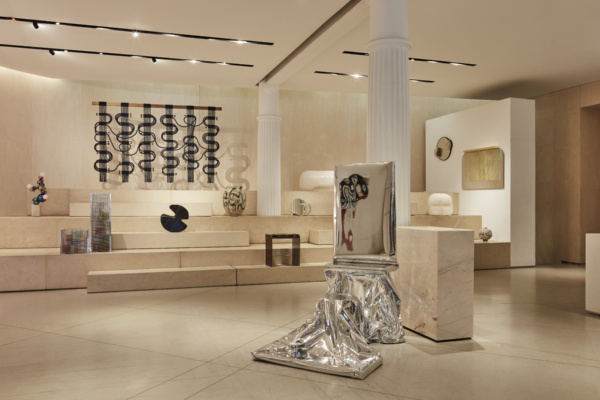
“Upon Further Reflection” installation view. Photo by Angela Hau
While spiky cloches, circuit boards, and moon jars may stem from an abstract interpretation of the idea of reflection, some artists stayed closer to the prompt, though still embedded conceptual rigor into their pieces. Soft Geometry, the collaborative design practice from Indian designers Utharaa Zacharias & Palaash Chaudhary, presented “Mirrors for Aliens,” which transformed thali plates, a staple of Indian kitchens, into mirrors. Its indentations blur and distort reflections, disrupting the ability to recognize oneself. It emphasizes the precarity of identity, of diaspora being distanced from their culture and the struggle to reconstruct their place in the world.
Another spin on the traditional mirror came from Teruko Kushi, a designer and metal worker. She harkened back to the mirror’s Bronze Age roots with “Kage (shadow),” a polished bronze mirror that has been partially swallowed by a turquoise patina. The oxidation blocks most of the surface, offering only a fragmented reflection to those who gaze upon it. By disrupting the mirror’s function in favor of a material study, Kushi also makes us consider the conceptual elusiveness of a reflection. People are unlikely to see themselves as how they really are. Instead, they pick up on pieces and fill in the gaps with their own imagination.
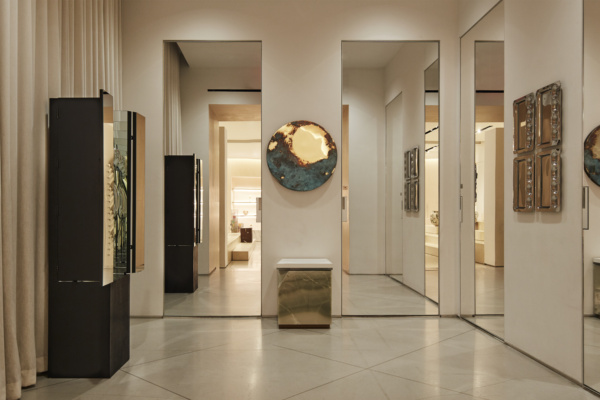
The exhibition wound through the entire store. Photo by Angela Hau
The connections between literal reflections and self-reflection led to another theme, memory. Many works were inspired by reflections upon the past. One particularly striking piece was Jean Pelle’s painting, “Pool Portrait,” which depicts her mother splashing in infinite waves. The woman stares at something off the canvas, smiling, splashing in water shining brightly in the sun. It’s a joyous work that shifts our association with reflection from a somber, contemplative act into a celebratory one.
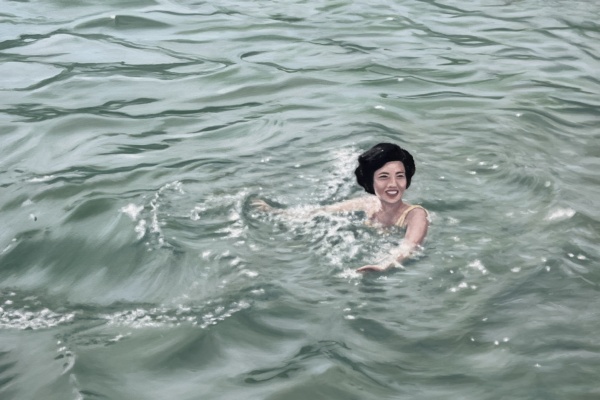
“Pool Portrait” by Jean Pelle. Photo provided by the artist
And celebration is truly the emphasis of “Upon Further Reflection.” These women, diverse in their backgrounds, all believe that their AAPI heritage has a place in the showroom. Appleton shares that reflection was not just limited to the designers, but was to be embraced by the audience, too.
“Allowing people of all ages to see themselves reflected in others inspired this exhibition, and enables me to help enlighten others on how broad and dynamic the global community of female driven AAPI studios in design is.”
